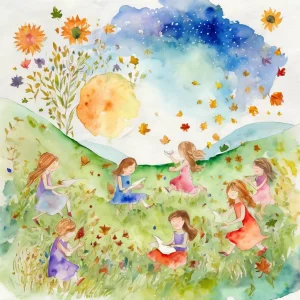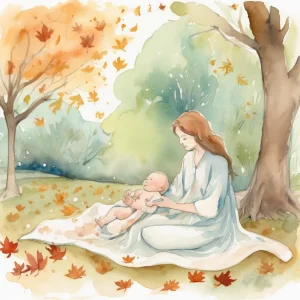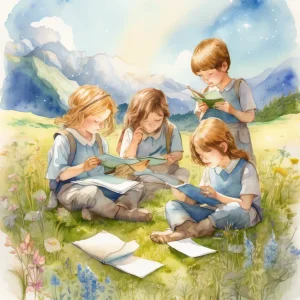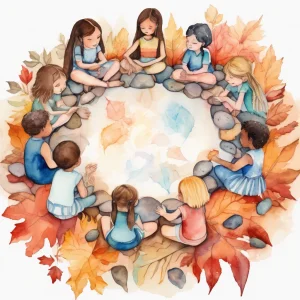Activity
Similar Activities
Whispers of the Seasons: Seasonal Collage Exploration
Children’s Age: 5–6 years
Activity Duration: 10 minutes
Engaging activity where children create collages representing different seasons.
Activity Duration: 10 minutes
Nature's Objects: Exploring Buoyancy Adventure
Children’s Age: 6–7 years
Activity Duration: 10 minutes
An engaging hands-on activity for children aged 6-7 to explore buoyancy with natural objects.
Activity Duration: 10 minutes
Enchanted Discovery: Nature Scavenger Hunt with a Twist
Children’s Age: 7–8 years
Activity Duration: 10 minutes
An outdoor educational activity for children aged 7-8 involving a nature scavenger hunt with historical items, leading to a nature collage creation.
Activity Duration: 10 minutes
Garden Sensory Walk: A Baby's Nature Journey
Children’s Age: 0 – 3 months
Activity Duration: 10 minutes
Explore the sensory walk in the garden with your infant aged 0 to 3 months for a calming and stimulating experience that encourages sensory exploration and communication skills in …
Activity Duration: 10 minutes
Enchanted Sensory Garden Exploration for Infants
Children’s Age: 0 – 3 months
Activity Duration: 10 minutes
Explore the Sensory Garden with your little one aged 0 to 3 months for a delightful outdoor sensory experience. Enhance communication skills and adaptive development as your infant…
Activity Duration: 10 minutes
Adventure Through the Obstacle Course Wonderland
Children’s Age: 2–3 years
Activity Duration: 15 minutes
"Obstacle Course Adventure" is an engaging outdoor activity tailored for children aged 24 to 36 months, focusing on language and motor skill development in a fun environment. By se…
Activity Duration: 15 minutes
Nature Sounds Sensory Experience for Infants
Children’s Age: 0 – 3 months
Activity Duration: 10 minutes
Engage infants aged 0 to 3 months in a Nature Sounds Sensory Experience to support language development by listening to and exploring nature sounds. You will need a soft blanket or…
Activity Duration: 10 minutes
Enchanted Nature Scavenger Hunt and Discovery
Children’s Age: 6–10 years
Activity Duration: 30 minutes
The "Nature Scavenger Hunt and Data Collection" activity is designed for children aged 6 to 10 to enjoy a fun and educational outdoor experience. By exploring nature and collecting…
Activity Duration: 30 minutes
Enchanted Melodies: Musical Rhyme Relay Adventure
Children’s Age: 3–4 years
Activity Duration: 15 – 20 minutes
Engage children aged 36 to 48 months in the Musical Rhyme Relay, a fun activity promoting adaptive development and communication skills. Set up a relay course with cones, musical i…
Activity Duration: 15 – 20 minutes
Enchanted Nature Scavenger Hunt with Communication Twist
Children’s Age: 3–4 years
Activity Duration: 20 minutes
The Nature Scavenger Hunt with Communication Twist activity is perfect for children aged 36 to 48 months to enhance their language and communication abilities while exploring the o…
Activity Duration: 20 minutes
Nature's Patterns: Exploring Geometric Symmetry Journey
Children’s Age: 4–6 years
Activity Duration: 10 – 15 minutes
Embark on the "Exploring Nature's Patterns" activity to discover geometric shapes and symmetry in nature. Children will enhance adaptive skills, language, and ecological awareness …
Activity Duration: 10 – 15 minutes
Starry Skies: Rocket Launch Adventure
Children’s Age: 6–10 years
Activity Duration: 25 minutes
"Rocket Launch Adventure" is an outdoor activity that engages children in a fun and interactive experience while promoting communication skills, play skills, and introducing basic …
Activity Duration: 25 minutes



























